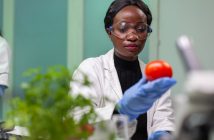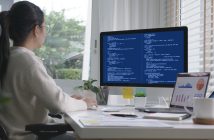Scienziato dei dati e fisico Ilan Dan-Gur scrive su come è stato in grado di trovare e perseguire argomenti di ricerca che hanno utilizzato le sue capacità e hanno il potenziale per avere un impatto nel mondo reale.
Trovare un argomento interessante e degno di essere studiato, e su cui applicare tutta la propria educazione e passione, è un problema che sta a cuore a molti scienziati che non hanno un lavoro a tempo pieno. Mentre si cercano piattaforme come Kolabtree per progetti che possono beneficiare della tua conoscenza è un'opzione importante che può portare a guadagni finanziari e alla soddisfazione personale di aiutare gli altri, potresti anche sentire il bisogno di trovare i tuoi argomenti di ricerca come un modo per iniziare un'attività o per farti un nome e mostrare le tue capacità.
Tuttavia, tra gli scienziati si sta diffondendo la convinzione che trovare argomenti interessanti da indagare sia oggi più difficile che mai, dato che il corpo delle conoscenze scientifiche continua a crescere. Paul Dirac, più tardi nella sua vita, ha detto a proposito dei primi tempi di meccanica quantistica: “It was very easy in those days for any second-rate physicist to do first-rate work…It is very difficult now for a first-rate physicist to do second-rate work.” But if you are not looking to produce anything remotely so grandiose, you may be able to find opportunities if you dig into information and data about topics that are interesting to you even if you are working from home using only your computer and WiFi (along with your college education, passion to investigate, and perhaps the local public library). For example, you may be able to analyze existing data in a new way that no one had thought of (or at least no one had published about), or perhaps you will be able to add new data to the current collection.
La mia formazione formale è in fisica ed elettro-otticaE sebbene la mia esperienza sia ovviamente soggettiva, vorrei offrire quattro esempi di argomenti su cui sono stato in grado di pensare e indagare "da solo" (beh, niente nella scienza lo è veramente) da casa (o molte volte da un caffè), che richiedevano l'applicazione delle mie conoscenze scientifiche, avevano una ragionevole possibilità di attirare l'interesse del pubblico ed erano entusiasmanti perché garantivano l'aggiunta di qualcosa di unico al corpo di conoscenze esistenti nel mondo.
1. Cluster geografici del cancro negli Stati Uniti.
Large databases of U.S. public health records are freely available [1], courtesy of the U.S. government. In 2017, while browsing through cancer-rate data of different U.S. states, and doing basic online research using google, it occurred to me that no article had been published with a focus on shared borders between states with high cancer rates. Specifically, no article had been published that simply counted the number of shared borders between states with the highest cancer rates, even through the data to do such an analysis was readily available on the CDC website, and the investigation would have been straightforward and easy to do. Put differently, my intention was to take a large amount of data and “connect the dots” (i.e. organize) the data in a way that had never been done before, while intentionally ignoring the more complex question of whether such an analysis would be useful and to whom. I posted the investigation and the results on my website [2], as well as a secondary statistical analysis [3].
Inoltre, mentre facevo l'analisi e guardavo i dati, mi sono reso conto che c'era bisogno di coniare e definire un nuovo termine che era centrale per l'analisi, un "rapporto di confine condiviso", e che ha aggiunto emozione all'indagine.
2. Longevità negli Stati Uniti
In modo simile all'esempio 1, usando i dati statistici di mortalità degli Stati Uniti, ho creato e studiato domande uniche relative alla longevità [4].
3. Database di immagini di talpe della pelle
While today there is a large selection of mobile apps to analyze skin moles for signs of cancer, long before smartphones apps became popular I was the first to offer the public a free advice on signs of skin cancer [5] in return for posting their mole images on my website. While my intention was to educate the public about signs of skin cancer, as well as to advertise a software I had written for performing the analysis (see example 4 below), the result of offering a free analysis was the largest online database of user-contributed skin mole images [6], which, as I later found out, was used (with proper accreditation to my company, Opticom Data Research) in a book published in 2015 [7, 8] discussing advancements in matematica e statistiche (unrelated to my own website and analysis).
4. Analisi automatizzata dei nei della pelle
Nel 2001, dopo che vari dermatologi mi avevano detto che ero ad alto rischio di cancro alla pelle, e dopo aver subito otto biopsie della pelle, ho deciso di scrivere (e cercare di vendere) un software per personal computer (che ho scritto all'epoca usando C++ [9], e più recentemente tradotto in JavaScript per il libero uso sui browser web [10, 11, 12]), che analizzava le immagini dei nei. Prima che gli smartphone e le applicazioni mobili diventassero popolari, sono stato in grado di vendere copie del software C++ in tutto il mondo, insieme a un semplice attacco meccanico che ho progettato per tenere una fotocamera vicino alla pelle.
RIFERIMENTI
- [1] https://wonder.cdc.gov/DataSets.html
- [2] http://opticomdataresearch.com/statistics/cancer/clusters/main.htm
- [3] http://opticomdataresearch.com/statistics/cancer/clusters/shared-borders-statistics.htm
- [4] http://opticomdataresearch.com/statistics/how-long-will-i-live.htm
- [5] https://www.prweb.com/releases/2008/07/prweb1060104.htm
- [6] http://opticomdataresearch.com/mobile/mole-on-skin.htm
- [7] Applicazioni dell'algebra computerizzata (Springer proceedings in mathematics and statistics, 2015)
- [8] https://books.google.ca/books?id=tW0uDwAAQBAJ&pg=PA184&dq=opticom+dati+ricerca
- [9] http://opticomdataresearch.com/molesense.htm
- [10] https://chrome.google.com/webstore/search/skin%20cancer
- [11] http://opticomdataresearch.com/mobile/skin-cancer-image-search.htm
- [12] http://www.opticomdataresearch.com/mobile/atypical-mole.htm







